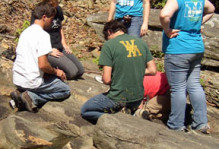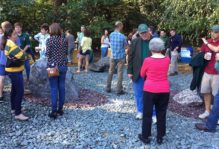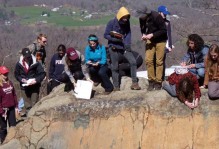Liberal Arts Reflections
November 16, 2009
No Comments
TO: Provost Michael Halleran
FROM: Herrington J. Bryce, Mason School of Business
Allow me to share some questions subsequent to our community conversations on October 29 on Liberal Arts and William and Mary.
- Could we use one of these conversations to address what is it about being labeled a “liberal arts college” that (a) accurately identifies or misidentifies us, and (b) gives us a (dis)-advantage? Why does the label agitate some and not others? What is it that we could do that we cannot now if the label were detached?
- Is it true that we are different because we emphasize a combination of teaching, research, and service? Are there schools of rank that do not require or honor the first two? Is it a matter of weight? Is service a matter of definition? Is there a faculty at any university that does not recognize service to the profession (e.g., editor of journal, officer or committee assignment) or to the public (service in an administration or humanitarian)? Is our “service” distinction our willingness to recognize service to a civil community? Don’t faculty at other universities serve on academic committees? What is distinct? Is it that research is often over weighted elsewhere? Would we not give a professor tenure if he or she were stellar in research and teaching but not in service?
- Is it that the way a school is labeled is determined partly by others; e.g., rating firms? Is it also part of “marketing” a school? Is it that William and Mary would enjoy prominent ranking without being in that or a similar class? Is it that the adjectives before or after “William and Mary” usefully identify near uniqueness, differentiation, and a niche in a universe called “universitities and colleges”? Aren’t these descriptors useful signals in recruiting students and convincing parents? Would doing without them be helpful? Are there descriptors we should consider?
- It is a very good thing to choose the best schools as our targets and to think that we are or can compete and are comparable. Is it not another to simultaneously argue that they have resources (endowments, competitive grants, and annual giving) we do not have and that these allow them to perform at that level? Would it not be instructive to have a conversation to set out the specific bases upon which we have achieved comparability without the resources we admit are required to do so but that we also say we do not have? Would this not define a path we should follow?
- Would it be useful to have conversations on fundraising at William and Mary and comparable schools and whether from that perspective liberal arts is a viable investment option and also marketable in the 21st century; e.g., sustain our world relevance and competitiveness?
- Would it be revealing and community-spirit-building to include a discussion of bringing the Mason School (and Miller Hall) and the School of Education, etc. on line? Are these models that others on campus can replicate? The remarkable thing about Miller Hall is the imagination, the years of dedicated leadership, and the community of staff, faculty, friends, and alumni that invested much of themselves in making it happen (when disappointment and obstacles could have prevailed) and the atmosphere that was created for these to be productive. Thus, Miller Hall has a unique human touch that is more than its architecture and the difficulty of raising money. Are there lessons to be learned? Is there a community pride to be shared?
- Would it be beneficial to have a set of conversations on what we are as a community (not only personal relationships but cross departments and external networks)? Do such networks broaden our viability as a prominent liberal arts institution? Is it possible to partner with other institutions to broaden our access to resources we do not have? To what extent does the viability of a liberal arts education in the 21st Century rest on innovation and partnerships?
- Would it be beneficial to have a set of conversations on how we may infuse liberal arts as a narrative in and across the various curricula or as a capstone nonelective but nongraded lecture or public symposium–aside from the standard curricula as they now stand? Is this infusion not a worthwhile distinction? I was fascinated after our discussions by the professor who teaches a course combining the teaching of language with global ecology. In the Mason School, Professor William Geary once taught great literature as it relates to business. Is it possible that our brand might be the infusing of the liberal arts narrative across curricula as we have infused technology? Should we find a way? I mentioned my colleague, Professor Marian Jelinek –astute, well-trained but the Mason School has others and one of its distinctions is the breadth of backgrounds of its faculty–beyond “business” as a profession. The concept of professional schools (including business and public policy) hides the intellectual richness (and liberal arts training) of those who occupy them and therefore how these influence what they do and how they interact with students–the college community.
- Given our commitment to community service, would it be beneficial to have a conversation among students across curricula on “service”? Would this not be part of a liberal education, community-building and sharing? Would this not strengthen our identity by the way we do things and by what we expect from ourselves and students in addition to grades? Would this not be a doable extension or packaging of how we are involved?
Categories: Academics, Faculty & Staff Blogs




No comments.
Comments are currently closed. Comments are closed on all posts older than one year, and for those in our archive.